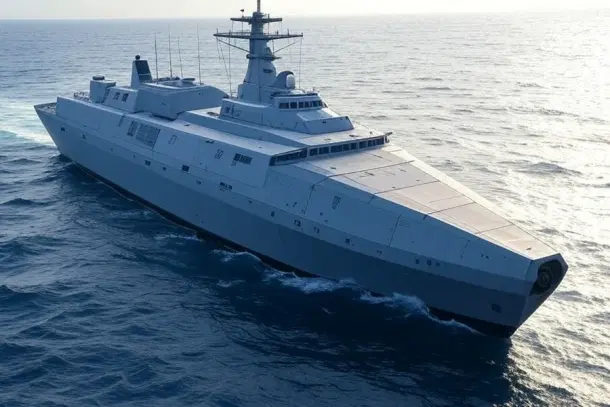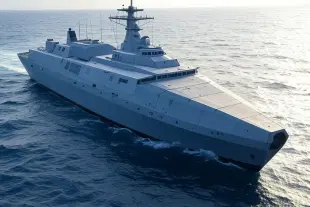News Brief
U.S. Navy Invites Proposals For Robot Warships: Missile-Carrying Unmanned Ships Signals Future of Naval Combat
Swarajya Staff
Aug 02, 2025, 09:18 AM | Updated 09:18 AM IST
Save & read from anywhere!
Bookmark stories for easy access on any device or the Swarajya app.


The U.S. Navy has unveiled an ambitious plan to bolster its maritime capabilities with the launch of the Modular Attack Surface Craft (MASC) program, a strategic move to integrate advanced unmanned surface vessels (USVs) into its fleet.
On July 28, the Naval Sea Systems Command (NAVSEA) issued a solicitation, inviting industry partners to submit proposals by August 11, 2025, for developing these cutting-edge drone vessels.
This initiative marks a significant shift in naval warfare, aiming to address evolving geopolitical and technological challenges while overcoming the U.S. Navy’s chronic shipbuilding constraints.
The MASC program consolidates the Navy’s earlier Medium and Large USV initiatives into a single, versatile platform designed for multi-mission operations. The solicitation outlines three distinct vessel concepts, each tailored to carry containerized payloads for missions ranging from intelligence, surveillance, reconnaissance, and targeting (ISR&T) to anti-surface warfare, strike warfare, and information operations.
The primary variant, deemed most critical, is a high-endurance USV capable of carrying two 40-foot ISO containers, weighing up to 36.3 metric tons and consuming 75 kilowatts of power each. This vessel must achieve a minimum range of 2,500 nautical miles at 25 knots in NATO Sea State 4, ensuring operational resilience in challenging conditions.
The second variant supports up to four 40-foot containers, while the third carries a single 20-foot equivalent unit (TEU) weighing 24 metric tons, with unobstructed aft access to maximize payload flexibility.The MASC’s modular design, centered on containerized missile launchers and sensor packages, is a game-changer.
The U.S Navy has already tested the Mk 70 Expeditionary Launcher, a containerized derivative of the Mk 41 Vertical Launch System, capable of firing Standard Missile-6 (SM-6) and Tomahawk missiles. Future payloads could include laser or high-power microwave directed energy weapons and electronic warfare suites, highlighting the program’s adaptability to emerging threats.
The U.S Navy’s focus on commercial off-the-shelf technology and non-exquisite vessel designs ensures cost-effectiveness and scalability, allowing production and maintenance at multiple shipyards.
The tight timeframe of the MASC program underscores its urgency.
The U.S Navy aims to prototype and demonstrate MASC USVs within 18 months of contract award, reflecting the need to rapidly enhance fleet capacity amid global tensions.
Analysts have shown enthusiasm for the program, with some noting its potential to transform naval operations by deploying missile-carrying drones over long distances.
The use of Other Transaction Agreements (OTAs) facilitates this accelerated timeline by streamlining acquisition and encouraging non-traditional defence contractors to contribute innovative solutions.
Further, the MASC program addresses critical gaps in the U.S. Navy’s force structure, exacerbated by underfunded shipbuilding programs.
By deploying USVs as “adjunct magazines” to support manned warships, the Navy aims to enhance distributed lethality and battlespace awareness. This is particularly vital in contested environments, where unmanned vessels can undertake high-risk missions, such as surveilling adversaries or countering enemy ISR capabilities, without risking human lives.
As global powers like China and Russia advance their naval drone capabilities, the MASC program positions the U.S. Navy at the forefront of maritime innovation.
For India, observing this development offers valuable insights into integrating unmanned systems into naval strategy, especially in the Indo-Pacific region, where maritime security is paramount. The MASC program’s success could redefine naval warfare, blending autonomy, modularity, and firepower to create a resilient and adaptable fleet for the 21st century.





